Decize to Paray le Monial
We are now on the Canal du Centre.
From Decize we detoured onto the Canal de Roanne a Digoin, a short (58kms) canal built in 1838 to serve Roanne's industries of steel, cotton and textiles. During World War 1 Roanne was a major port for shipping of shells and artillery. With the decline in commercial traffic, the canal is now almost entirely used by recreational boats and has been termed the "tranquil canal". Certainly the scenery is tranquil, mostly dense forest growth or rolling pastures climbing to low hills in the distance. The Charolais cattle graze right next to the canal and often watched our progress with interest. We wondered about a herd of goats crossing a bridge in front of us, apparently unacompanied; yet another of life's little mysteries.
While the scenery is tranquil, the locks are quite daunting. There are only ten, but one has a 7.2 metre drop, two are of 6 metres. Another lock has a strong current which caught Anja as she was entering and pushed her into the other side of the lock gate- all 36 tons of her! The current was not meant to be there, there was an underground defect in the "plumbing" which caused the problem. Some locks are automatic but close for lunch.
The Loire is never far away, getting closer to its source in the South of France. We spent the weekend in Roanne, a town which used to be a major port on the Loire, in fact way back to Gallo Roman times when it was called "Rodumna". It is unmarked on any tourist maps but interesting nonetheless. There is an excellent museum displaying archaelogical artefacts found locally (in fact in the adjacent streets) dated as far back as the 2nd century BC, most of it 1st and 2nd century AD when it was a thriving Gallo Roman settlement. There is a characteristic "Roanne Bowl", with many examples found here but nowhere else.
There was also an excellent display of more modern ceramics, many made locally or in Nevers, including a collection of over 600 items from the time of the French Revolution, beautifully made and very attractive, full of revolutionary slogans and celebrations of the new order. Others were quite funny including one from the mid 18th century called "The Tree of Love" with a dozen men in the branches of a large tree and a similar number of women with axes and saws chopping it down and trying to grab the escaping fellows. Other ceramics were more what we had expected, with deep colours and exquisite workmanship.
The weather here is continuing to be warm and sunny. We had a brief storm the other day but otherwise no rain, so the farmers are not happy. We can see the growth browning off, especially on the ridges. Penny got caught in the storm at the ecluse but the eclusier kindlky unlocked a small shed so she could shelter while the boat rose in the lock (see photo below).
After a day's rest we set off again back towards Digoin, where the Canal Lateral a la Loire ends and the Canal du Centre begins. Just outside Digoin we crossed the Loire yet again, via a 240 metre aqueduct. This is our final view of the Loire whose many faces we have observed for the last few weeks. Again David steered straight and true, undaunted by the many watchful eyes from people walking alongside. We continue to be much photographed but are now used to it. The biggest crowd watching us entering a lock was about 23.
When we left Roanne, we learned from the eclusiers that they wanted us to hurry and get beyond a certain point that day because they were going to try and repair the defective lock. So, the next day, a major section of the canal was closed and we suspect they had to drain that section of the canal in order to get at the subterranean leaks. As usual, things were a little unclear and there were variosus stories going the rounds of boats that were turned back.
Photos show:
Ramparts at Decize, the Loire, Penny working the lock from the bow, Penny shelters from storm, the "tranquil canal", typical bridge over Roanne canal, Musee at Roanne, Roanne harbour, town of Bourg le Compte, high lock, Paray le Monial, Last sight of the Loire from the Digoin aqueduct, Digoin aqueduct.
Best Regards, Penny and Dave
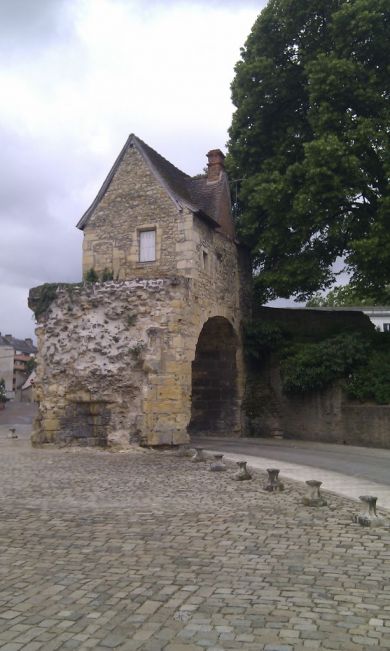



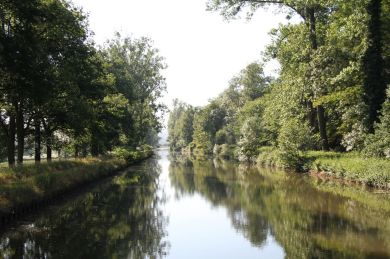
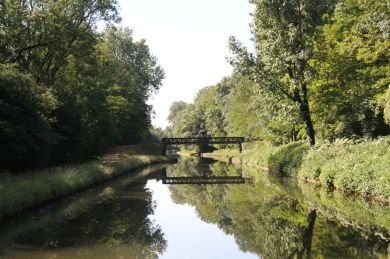







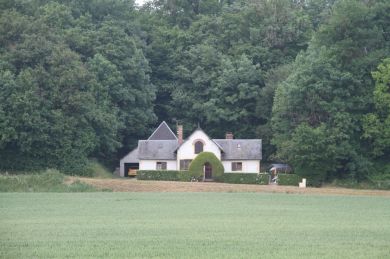
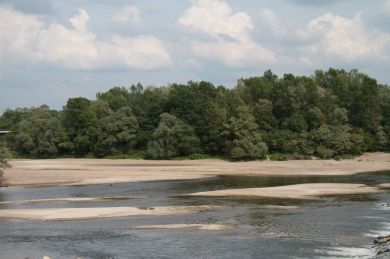

















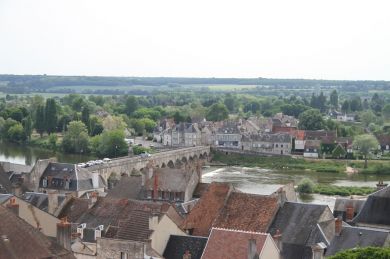



Herman: Just beautiful. (05/26/11)